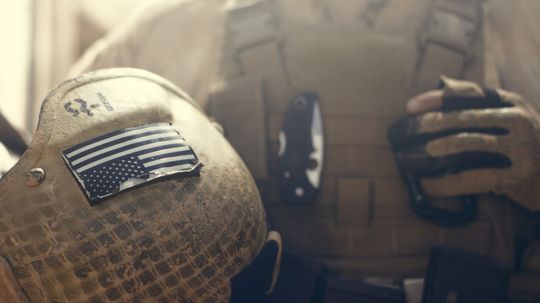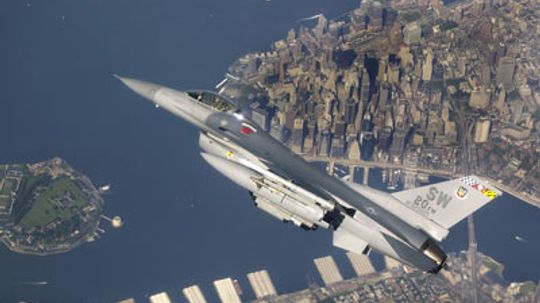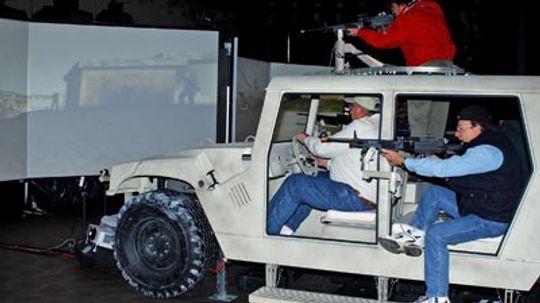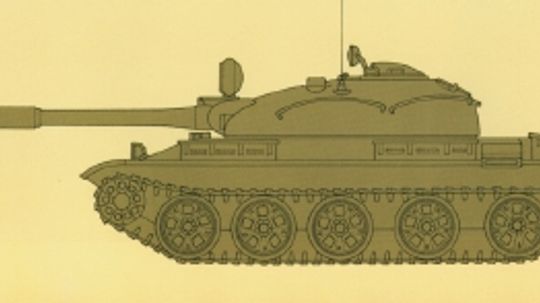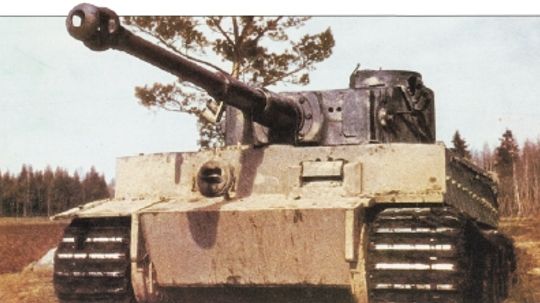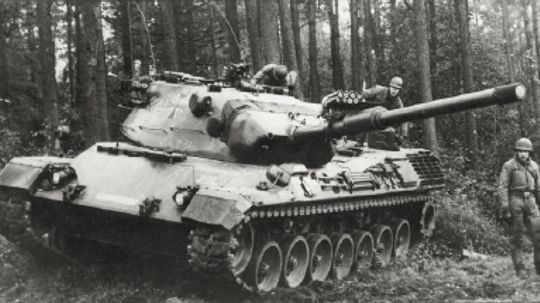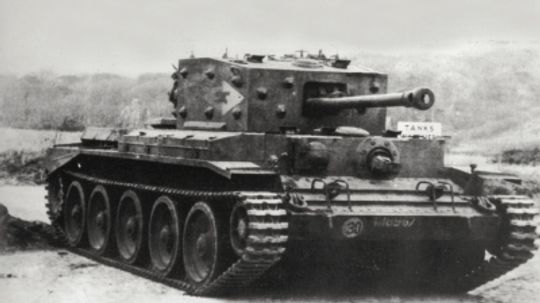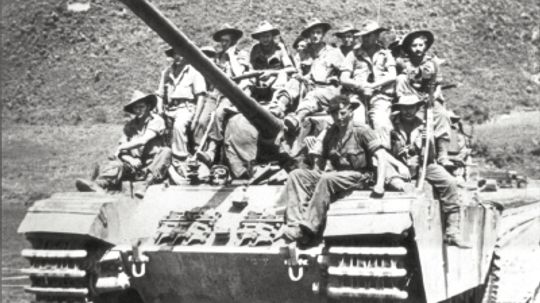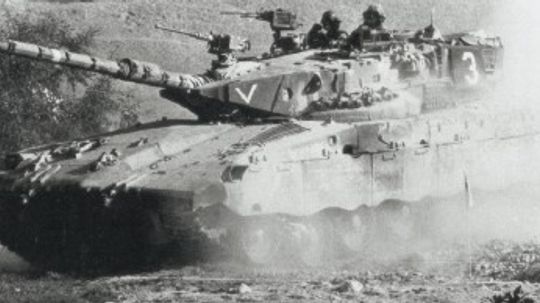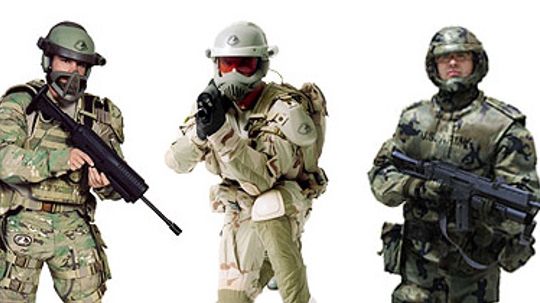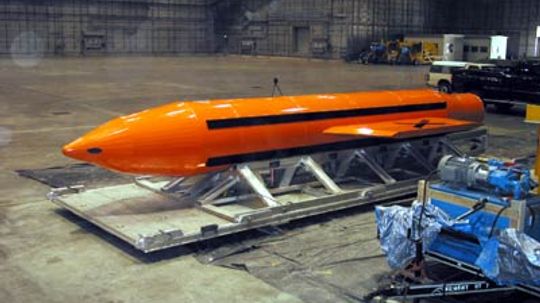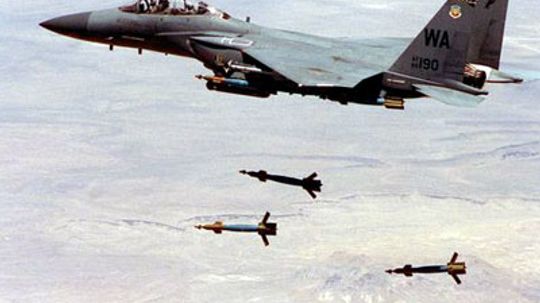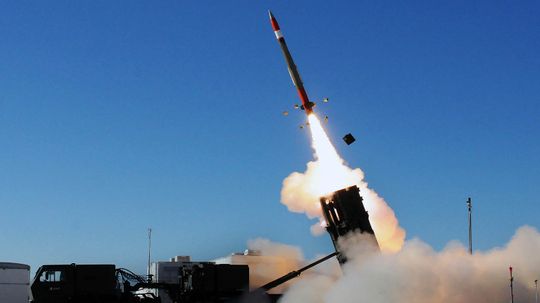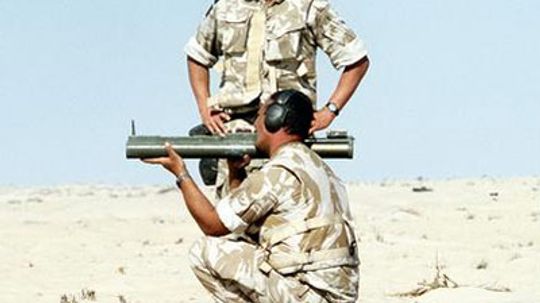Military
Explore the weapons and combat systems used by the armed services. A broad range of topics in the Military Channel includes tanks, aircraft, biological warfare and stealth technologies.

Watch Your Six: Military Jet Pictures

McDonnell Douglas F-4 Phantom II

Lockheed P-38 Lightning
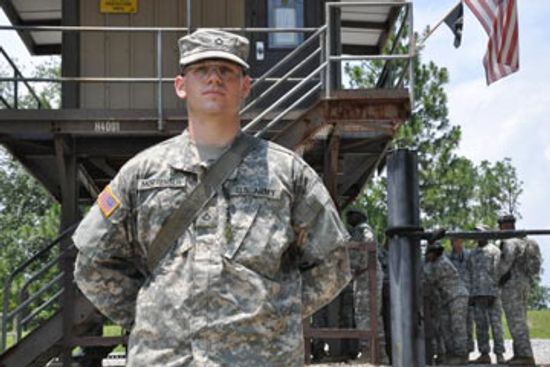
Does Army experience help your civilian career?

How NCO Professional Development Ribbons Work
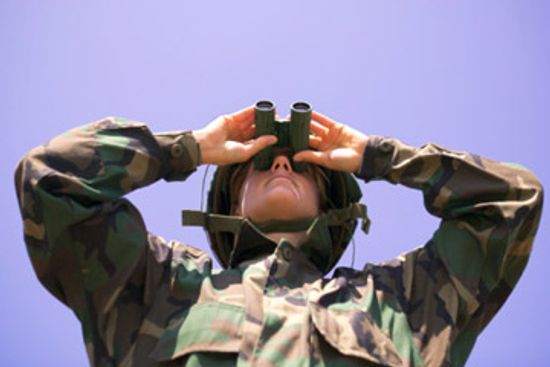
How Army Reconnaissance Jobs Work

How Agent Orange Worked
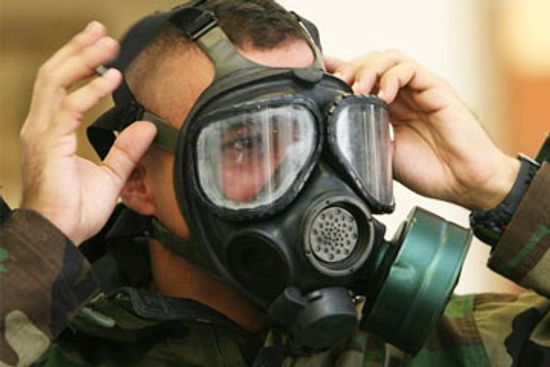
How Biological and Chemical Warfare Works
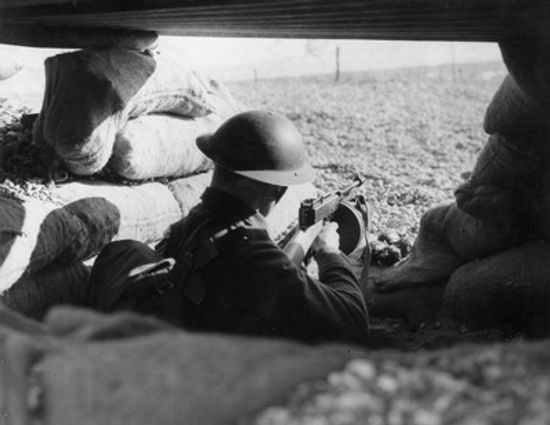
How Mustard Gas Works
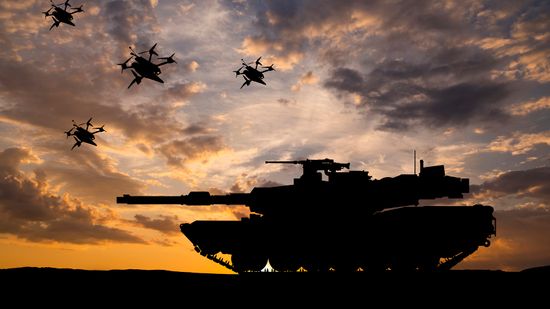
What Is the Strongest Military in the World?

5 Countries That Ditched Their Military Forces
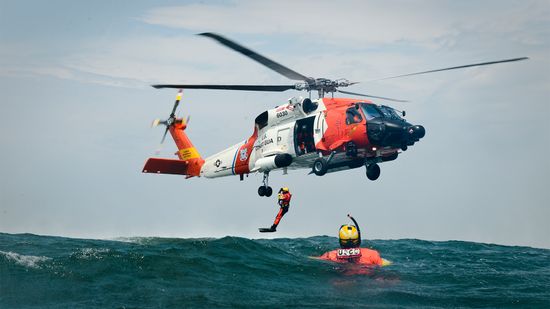
Coast Guard Rescue Swimmers Risk All to Save Lives
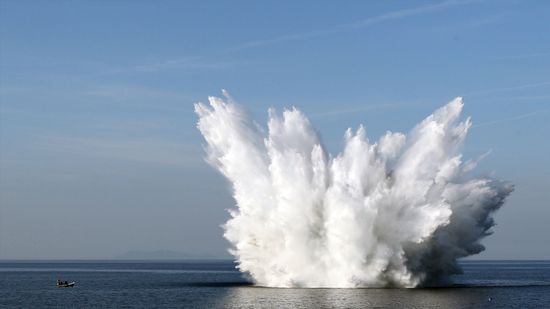
Anatomy of an Underwater Explosion

Can You Really Outrun an Explosion?
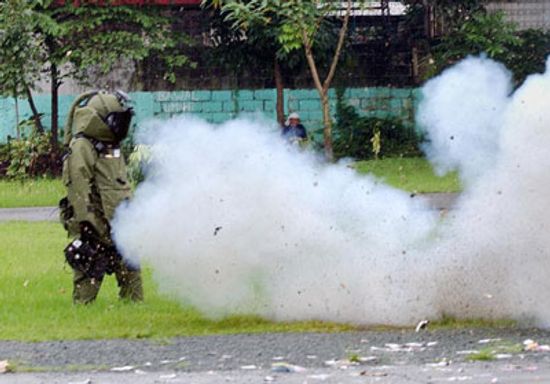
How Blast-resistant Clothing Works

HowStuffWorks Illustrated: Two Legal Gun Modifications

Gun Pictures

What's the world's smallest gun?

Are robots replacing human soldiers?
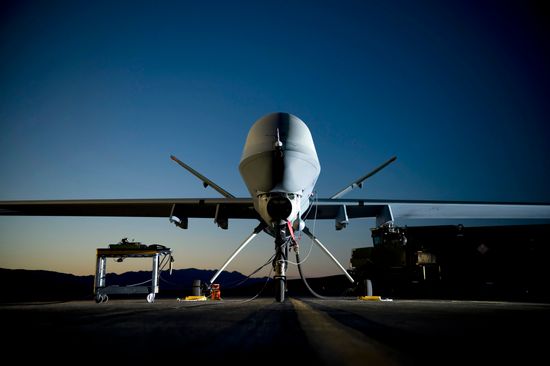
Can drones replace fighter jets?
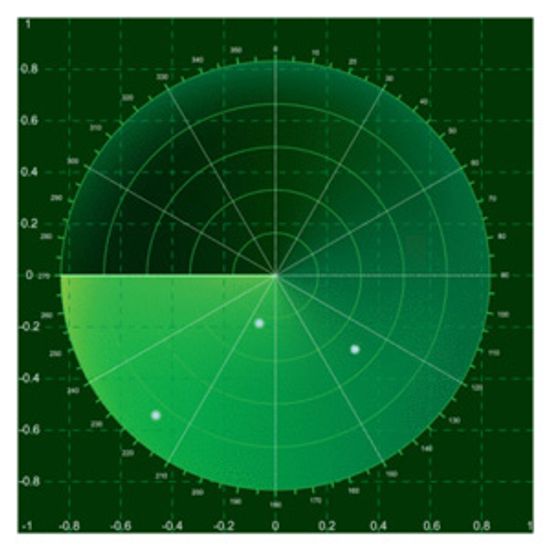
Do wars drive technological advancement?
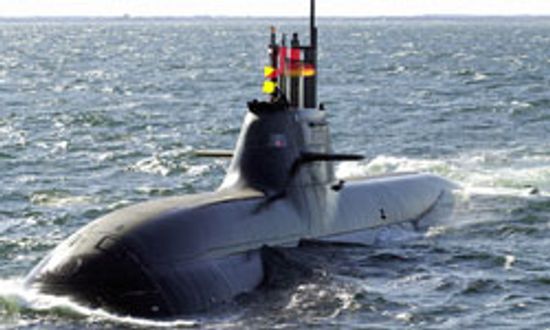
Submarine Pictures
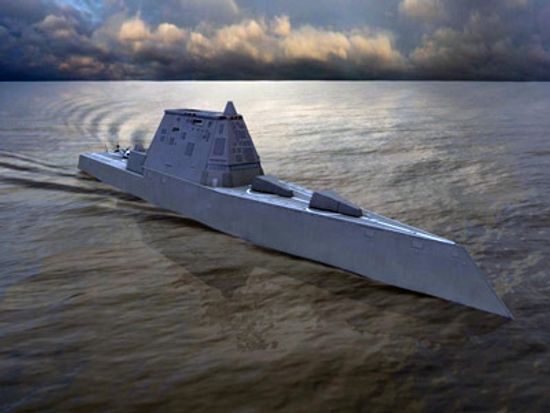
How the Zumwalt Class Destroyer Works

How Aircraft Carriers Work
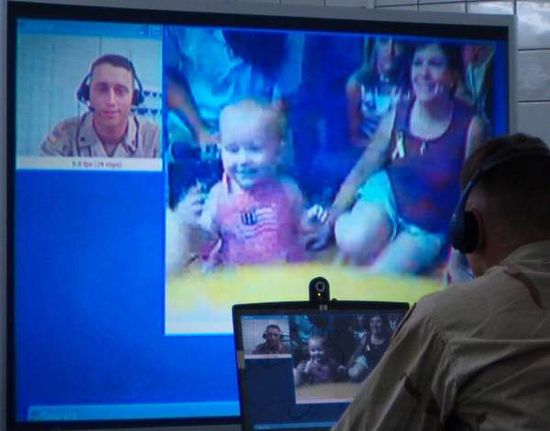
How Military Video Conferencing Works
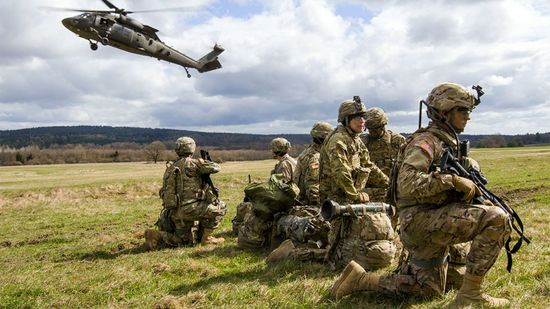
Why a Draft Would Weaken the U.S. Military

What Was the First War?
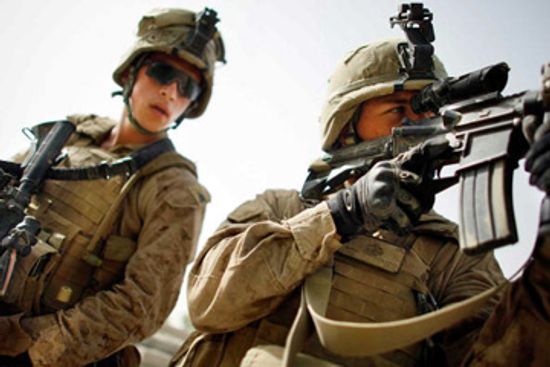
Top 5 Gadgets on the High-tech Soldier

Ghillie: Fishing Aid and Inspiration for Camo Suits

10 Insane Disguises That Actually Worked

How Code Breakers Work

YOU Can Drive a Tank!
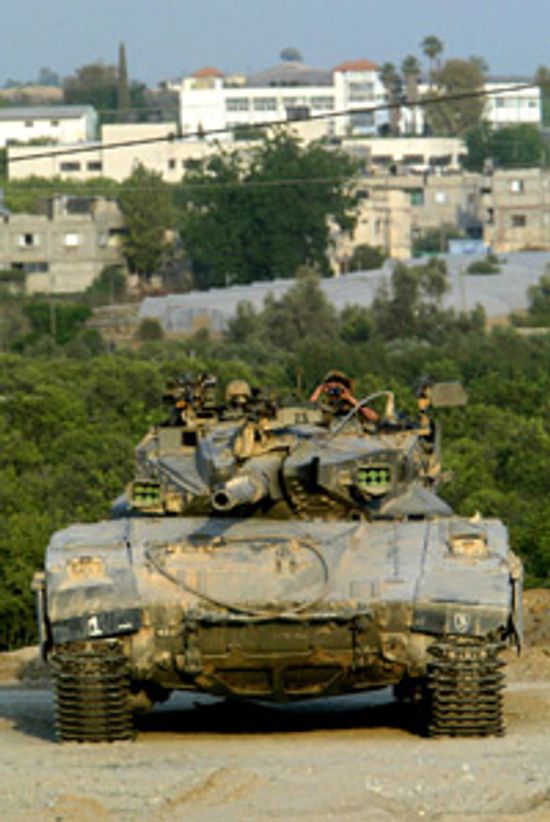
Is the army testing an invisible tank?
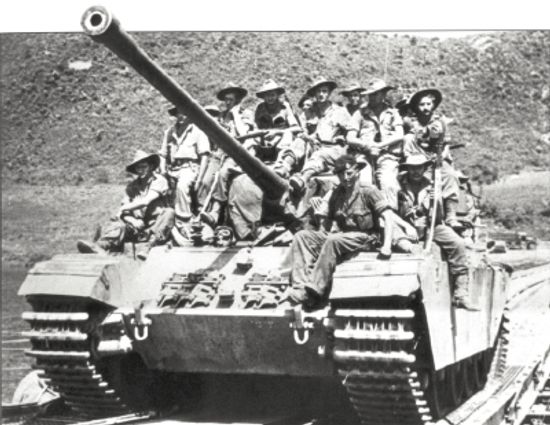
Centurion Main Battle Tank
Learn More / Page 5
John F. Kennedy called the green beret "a symbol of excellence, a badge of courage, a mark of distinction in the fight for freedom" -- a nod to the most formidable arm of the U.S. military. The Green Berets, or Special Forces, are America's first line of defense around the world.
By Josh Clark
Delta Force is the U.S. military's most elite tactical combat group. Yet the government refuses to deny its existence. Does a well-funded secret force that, allegedly, answers only to the president make the U.S. more secure or more vulnerable?
By Josh Clark & Sascha Bos
Ever heard of a military operation run out of a hollowed-out mountain? Welcome to NORAD, a defense command that monitors air and space for potential attacks on the U.S. Learn about NORAD and the unique location for the NORAD headquarters.
Advertisement
The military uses virtual reality for most everything -- from learning to fly a jet fighter to putting out a fire onboard a ship. Learn about how virtual reality military applications help with training and safety enhancement, and serve as a tool to analyze military maneuvers and battlefield positions.
The M-48 General George S. Patton Medium Tank was developed in anticipation of the Cold War and used in the Korean War. All M-48s were equipped with main guns that can fire a wide variety of ammunition types. Explore the M-48 Patton tank.
The T-34 Medium Tank had few amenities but enough power to help the Soviets beat back a Nazi invasion in World War II. This tank was well armored and heavily gunned, which made it the toughest tank the Germans encountered in Russia. Explore the T-34 Medium Tank.
The T-54/T-55 Main Battle Tank series, one of the most popular in Soviet history, is still in use today. These tanks were more heavily gunned than previous versions and were distributed to military forces around the world. Learn about the T-54/T-55 Main Battle Tank.
Advertisement
The T-62 Main Battle Tank was the second generation of Soviet MBTs, based on the T-54/T-55. This tank signaled the end of heavy tanks throughout the world. Learn about the T-62 Main Battle Tank at HowStuffWorks.
The T-64 Main Battle Tank was long mistaken for another Soviet tank, the T-72. The main weapon on this tank was capable of firing anywhere from 5 to 8 rounds per minute. Explore the features of the T-64 Main Battle Tank at HowStuffWorks.
The T-80 Main Battle Tank continued the evolution of T-64 and T-72, adding a gas turbine engine. Because of the engine, this particular tank had the capability to reach 40 miles per hour. Explore the T-80 Main Battle Tank at HowStuffWorks.
The Panzerkampfwagen VI Tiger I was a formidable battle tank in World War II. This tank featured armor that was over four inces thick that hurt this tank's agility. Learn about the design and history of the Panzerkampfwagen VI Tiger I.
Advertisement
The Leopard 1 Main Battle Tank was post-war Germany's first tank designed and built in West Germany. This tank can be sealed and pressurized for use in biological warfare situations. Learn more about the Leopard 1 Main Battle Tank.
The Cromwell A-27M Infantry Tank was fast and agile but still outmatched by opposition tanks. This tank featured a 57mm barrel that was bored out to accommodate a 75mm round. Learn about Britain's Cromwell A-27M Infantry Tank.
The Centurion Main Battle Tank was heavily armed and used by many countries. This tank was the most heavily armored tank ever produced in the post-war years. Learn the history and design of Britain's Centurion Main Battle Tank.
It was not until 1967 that the Israeli government turned its attention to the creation of a main battle tank, the Merkava. Israel and the surrounding area are either desert or rolling hills, which form ideal tank country. Read about the Merkava tank.
Advertisement
To do its job, a projectile must both make contact with the target and hit the target in a critical spot. If a rifle is like using a felt-tip pen, a shotgun is like using a can of spray paint.
By Dave Coustan
For the battlefield of the future, the U.S. Army is developing an infantry uniform that will provide superhuman strength and much more. Learn how the Future Force Warrior will turn a soldier into an "F-16 on legs."
By Kevin Bonsor
When the U.S. Air Force tested the MOAB last year, it tested one of the largest conventional bombs ever built. MOAB stands for Massive Ordnance Air Burst, and it's not for the faint-hearted. Find out how it fits into the U.S. arsenal.
Smart bombs can navigate their own way to specific ground targets with startling accuracy, even in poor weather conditions. Find out how JDAMs and other smart bombs automatically find and hit their targets.
By Tom Harris
Advertisement
Learn how EMPs work and how these weapons could tear apart modern technology.
By Tom Harris
The U.S. Pentagon says it is sending two Patriot missile batteries to Poland to help NATO add to its defense strategy against a possible Russian attack. How do Patriot missiles work?
Ordinary bombs can take out surface facilities; but when the target is underground or otherwise embedded, the job requires a bomb with penetrating power. That's where bunker busters come in.
Coalition troops have been surviving mainly on MREs (Meals Ready to Eat) for most of Operation Iraqi Freedom. Learn what these portable, adaptable and absolutely essential pieces of military technology are all about.
Advertisement
How does one of the most valuable pieces of military equipment travel around the world? When they move, an entire fleet of protective air and water craft moves with them. Learn all about carrier battle groups.
Rugged and simple, suitable for downing helicopters, disabling tanks or attacking buildings at close range -- in the hands of a skilled operator, the RPG is a lethal and versatile weapon.
By Shane Speck

